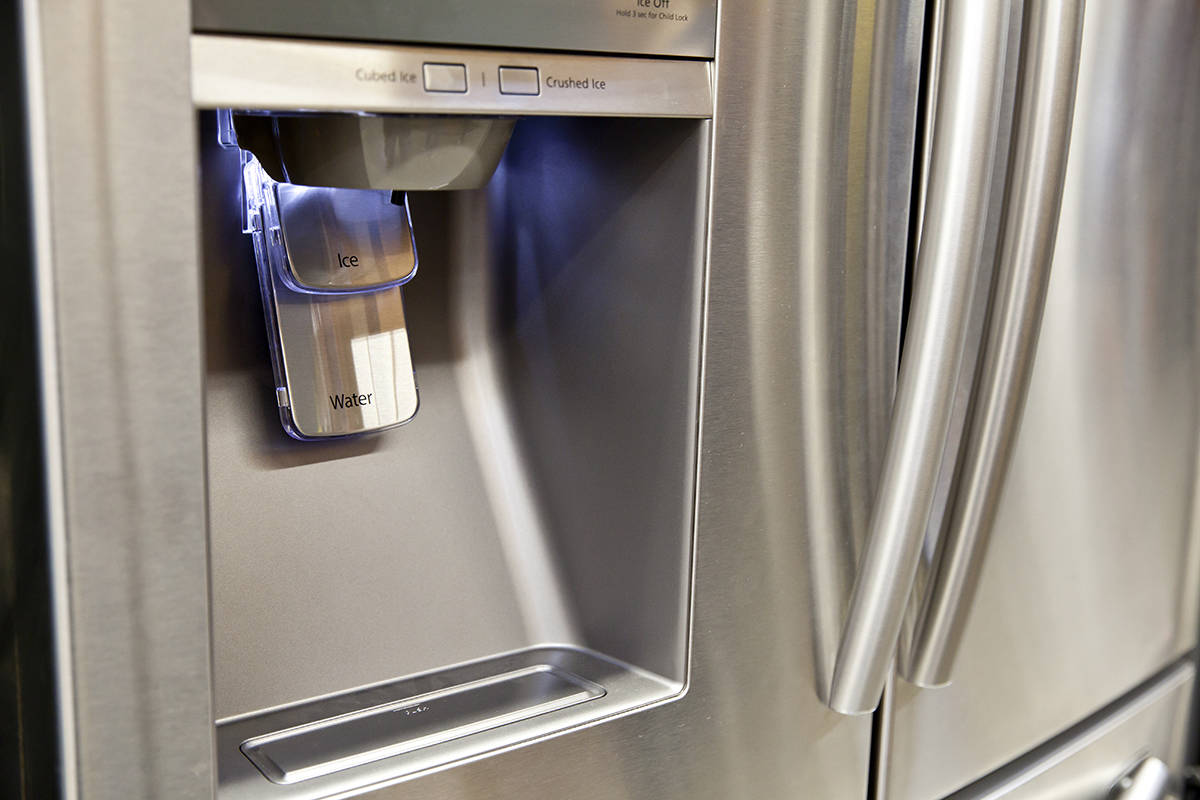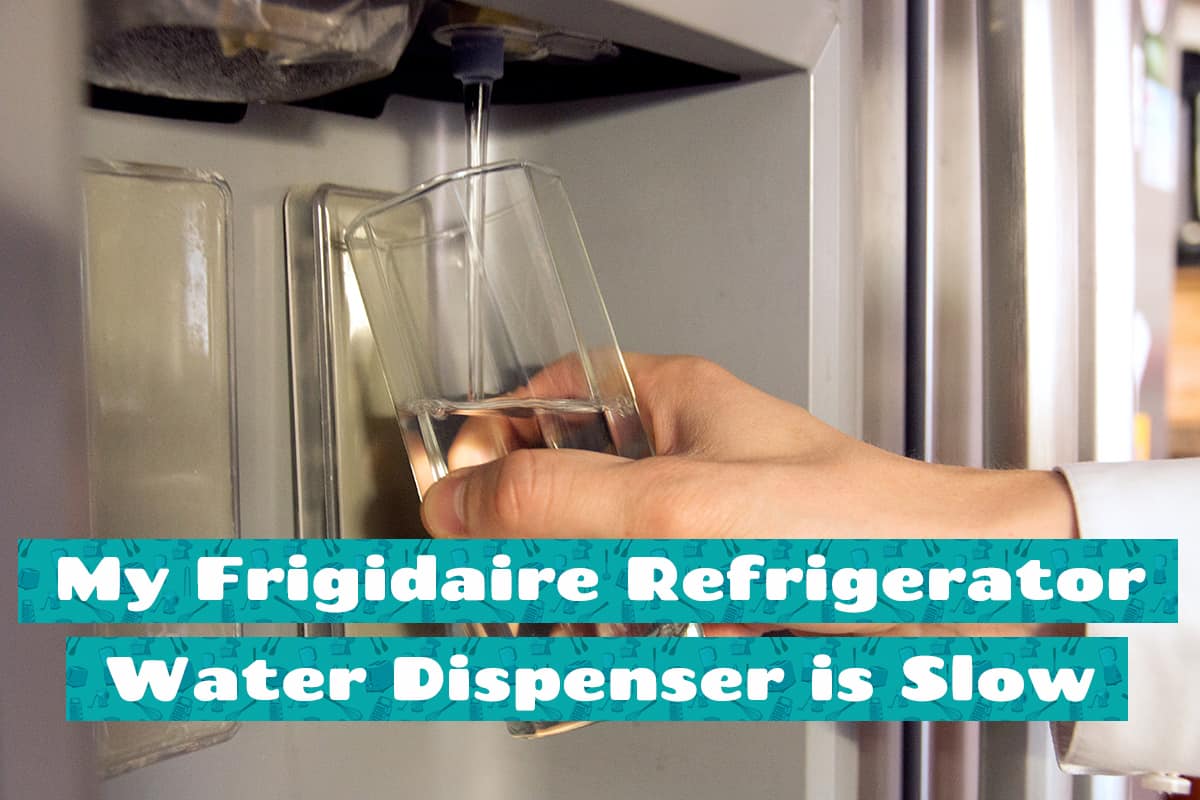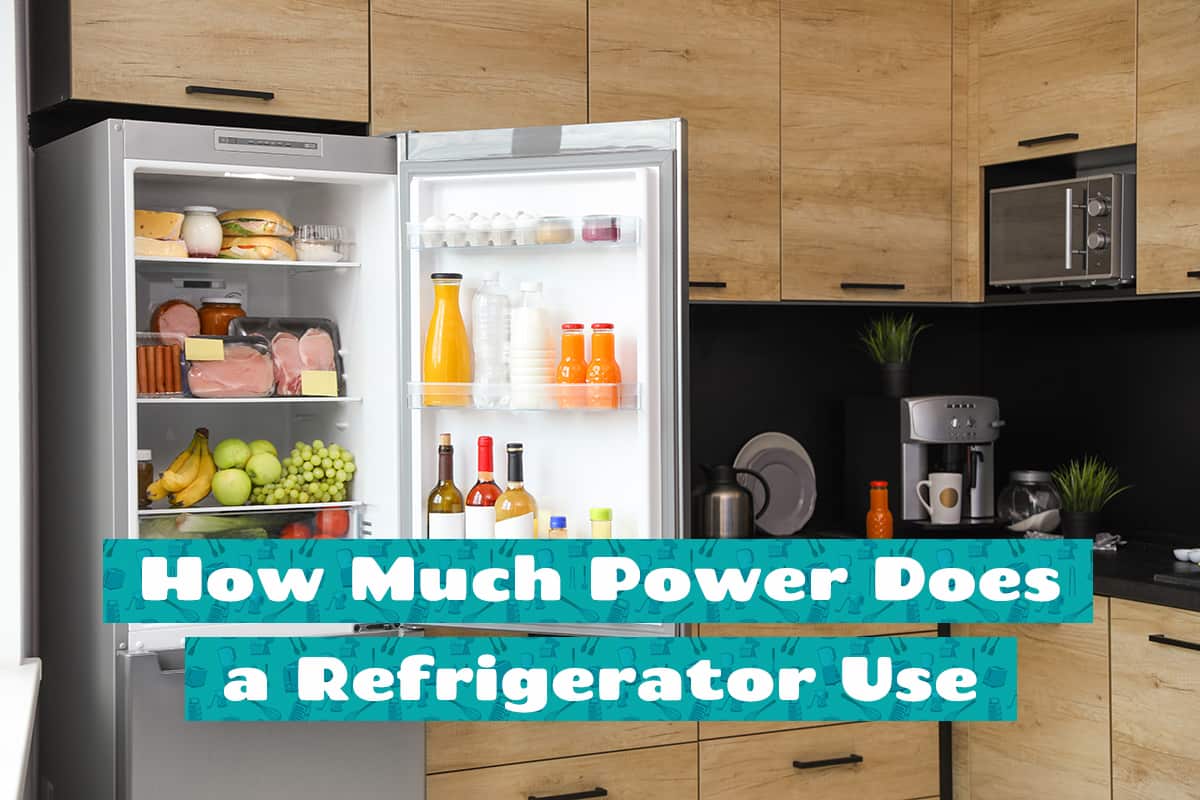We’ve all been there: You’re parched and go to your trusty Frigidaire fridge for a refreshing glass of water, but instead of a swift pour, you get a slow trickle. Frustrating, right? Your Frigidaire refrigerator’s water dispenser isn’t supposed to tease you like that!
The main culprits for this dilemma range from kinked water lines, worn-out filters, malfunctioning water valves, to sneaky air bubbles in the system. With a touch of maintenance or a pinch of DIY, you can restore the gush to your dispenser!
This guide will further explain each cause and offer handy solutions to keep your dispenser in tip-top shape.
Common Reasons for Slow Water Dispensation

That slow-as-a-tortoise water flow can ruffle anyone’s feathers. Let’s get down to the nitty-gritty and explore why your Frigidaire refrigerator might be acting more like a sloth than a sprinter when dispensing water.
1. Water Line Issues
Kinks or Bends: Just like how a kinked garden hose messes with your watering, a kinked water line restricts flow.
Sediment Buildup: Over time, tiny particles and minerals, the microscopic riff-raff of your water supply, can accumulate in the line. This buildup narrows the passageway, reducing the water’s speed.
2. Filter Problems
Filters get old. An aged filter can’t do its job properly, leading to slower water flow. Apart from slow water, if your ice starts tasting like a science experiment or your water has a funky odor, that’s your filter screaming for a change.
3. Water Valve Complications
This tiny component regulates the water flow to the dispenser. If it’s not opening fully or is on the fritz, it can bottleneck the flow. A common sign of a faulty valve is a peculiar humming noise or an inconsistent flow.
4. Air in the System
Ever try drinking with a straw that’s got holes? That’s what air in the system feels like for your dispenser. When replacing the filter or after a water shut-off, air can get cheeky and sneak into the lines.
How to Fix Slow Dispenser Problems

Don’t let your Frigidaire water dispenser tease you with slow-mo pours. Try any of the following solutions to have your water dispenser free-flowing again!
1. Dealing with Water Line Issues
- Straightening Kinks: Gently straighten the line at the back of the fridge, ensuring there are no pinches. Secure it with a clip if needed to prevent future bends.
- Flushing Out Sediments: Turn off the water supply. Detach the line from the fridge and place the end in a bucket. Turn the water back on to flush out any debris. Reconnect everything once done, and you’re golden!
2. Fixing Filter Problems
- Replacing the Filter: No rocket science here. Grab a new filter, unscrew or pop out the old one, and replace. Just make sure it’s the right model for your Frigidaire fridge. Psst! Some fridges might even give a little light or beep reminder when it’s time for a change.
- Checking for Proper Installation: Sometimes, it’s just a case of a filter playing hard to get. Ensure it’s properly seated and locked in place. No half measures!
3. Resolving Water Valve Issues
- Testing the Valve: Get a multimeter and test the valve for continuity. No continuity? That’s your culprit right there. Remember to unplug the fridge when doing this (safety first)!
- Replacing the Valve: If it’s acting up, it might be time to part ways. Turn off the water supply, unplug the fridge, and replace the valve. It’s typically located at the back, and it’s a simple unscrew, replace, and screw back operation.
4. Removing Air Bubbles
- Force Dispensing: Dispense water for about 2 minutes straight. This can force the air out. If water sputters out like a car engine, bingo! That’s the air being booted out.
- Resetting the System: For the tech-savvy, some Frigidaire models have a reset feature. Check your user manual. A simple button combo might just do the trick.
Maintenance and Prevention
When it comes to water dispensers, even one as durable and reliable as a Frigidaire model, a bit of love and care really goes a long way. Plus, as the old adage goes: prevention is always better than cure.
Regular Cleaning
- External Cleaning: Use a damp cloth (preferably microfiber to avoid scratches) to wipe down the dispenser area. A mild soap can tackle stubborn spots. Remember, no abrasive pads on that shiny finish!
- Internal Flushing: Once in a blue moon, give your water line a nice flush. This helps get rid of any particles or minerals staging a rebellion inside the line.
Filter Replacement
- Timely Replacement: Circle the date on your calendar or set a phone reminder. Typically, every 6 months is the sweet spot for a filter change.
- Choose Authentic: Go for genuine Frigidaire filters. Sure, Bob from down the street swears by those cheaper alternatives, but genuine parts mesh best with your fridge.
Watch the Valve
- Listening is Key: Occasionally, lend an ear to your fridge. If the valve hums louder than your shower singing, it might need a look-see.
- Regular Inspection: A casual peek behind the fridge once in a while can help spot any visible issues with the valve, like leaks or rust.
Keep It Bubble-Free
- After Filter Change: Post a filter swap, always run the dispenser for a minute. It’s like a mini workout for the fridge, pushing out any sneaky air.
- Regular System Resets: Some fridges come with nifty reset features. Familiarize yourself with it, and give it a go once in a while. It’s like a fresh start for your dispenser.
When to Call a Professional

You’ve given it your all, but sometimes a fridge problem can be sneakier than a ninja in the night. So, when should you hang up your DIY cape and buzz in a pro?
1. Major Leakage
If your fridge is spouting more water than a mini Niagara Falls, it’s probably time to ring the alarm. A clearcut sign of a major leakage is puddles growing around your dispenser faster than you can mop. In such a case, internal parts might be busted, or water lines are going in the wrong direction. Let someone with the right tools take a peek.
2. No Water at All
When your dispenser gives you the silent treatment, and not a drop is dropping. Several culprits can be at play—valves, switches, or something more mischievous. A professional will have the scoop.
3. Electrical Problems
Electrical issues aren’t to be trifled with, especially if you’re fond of your eyebrows. Flickering lights, intermittent shutdowns, and even not powering up at all are signs that your water dispenser requires a professional’s touch.
FAQs
1. How often should I inspect the water lines for potential issues?
Ideally, give your water dispenser’s water lines a once-over every six months. If you’re feeling extra responsible, doing it every season change wouldn’t hurt. It’s a quick look to spot any kinks, leaks, or discolorations.
2. Why does the water from my dispenser taste weird after fixing the slow dispensation issue?
After fixing the dispenser, there could be a few reasons for this palate surprise. First up, if you’ve installed a new filter, there’s a “breaking in” period.
Run a few gallons of water through the dispenser to clear out any carbon residues. If you’ve fiddled with the water lines or valve, there might be some air or minor contaminants that snuck in. Again, dispensing a good amount of water should clear things up.
3. Can I use any generic filter for my Frigidaire refrigerator?
Those generic filters can be easier on the wallet. But here’s the scoop: Using genuine Frigidaire filters guarantees the best performance and water quality.
Generic filters might not remove all contaminants as effectively, or they might not fit perfectly, leading to leaks. Plus, if something goes haywire, using non-genuine parts might affect your warranty.






